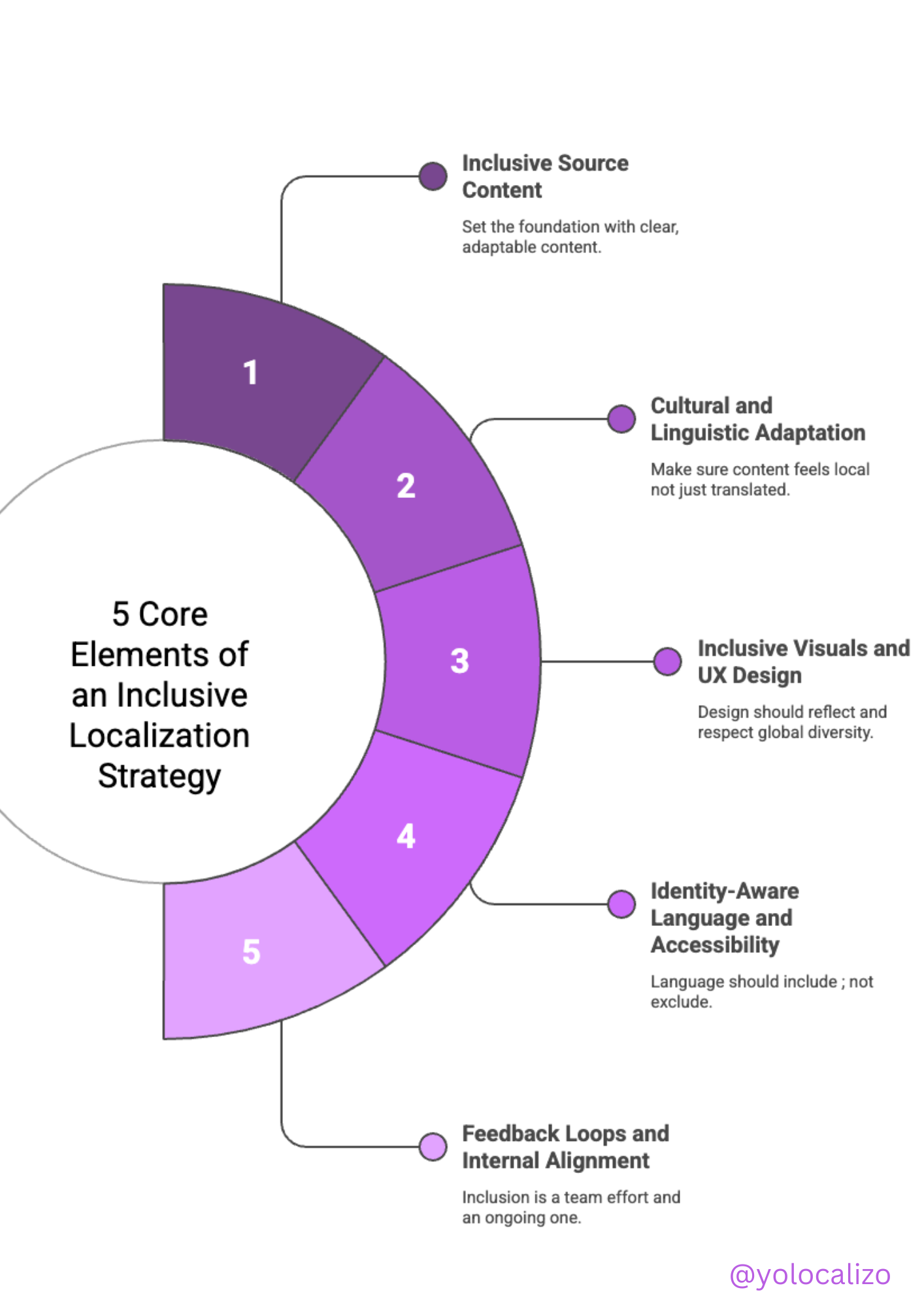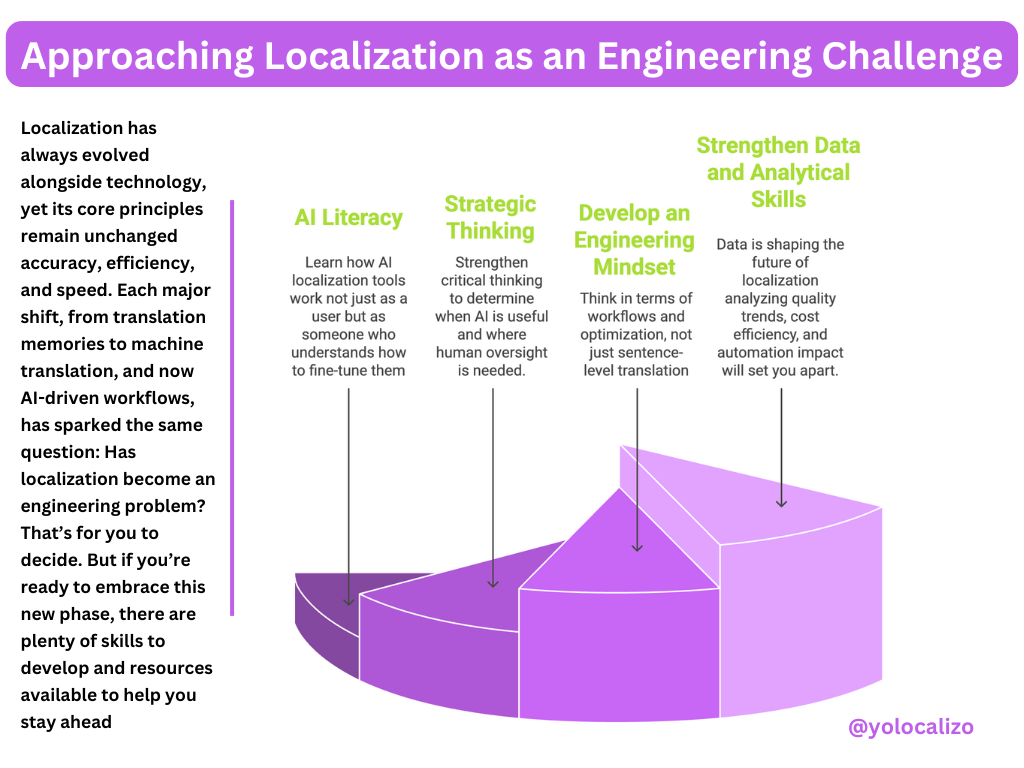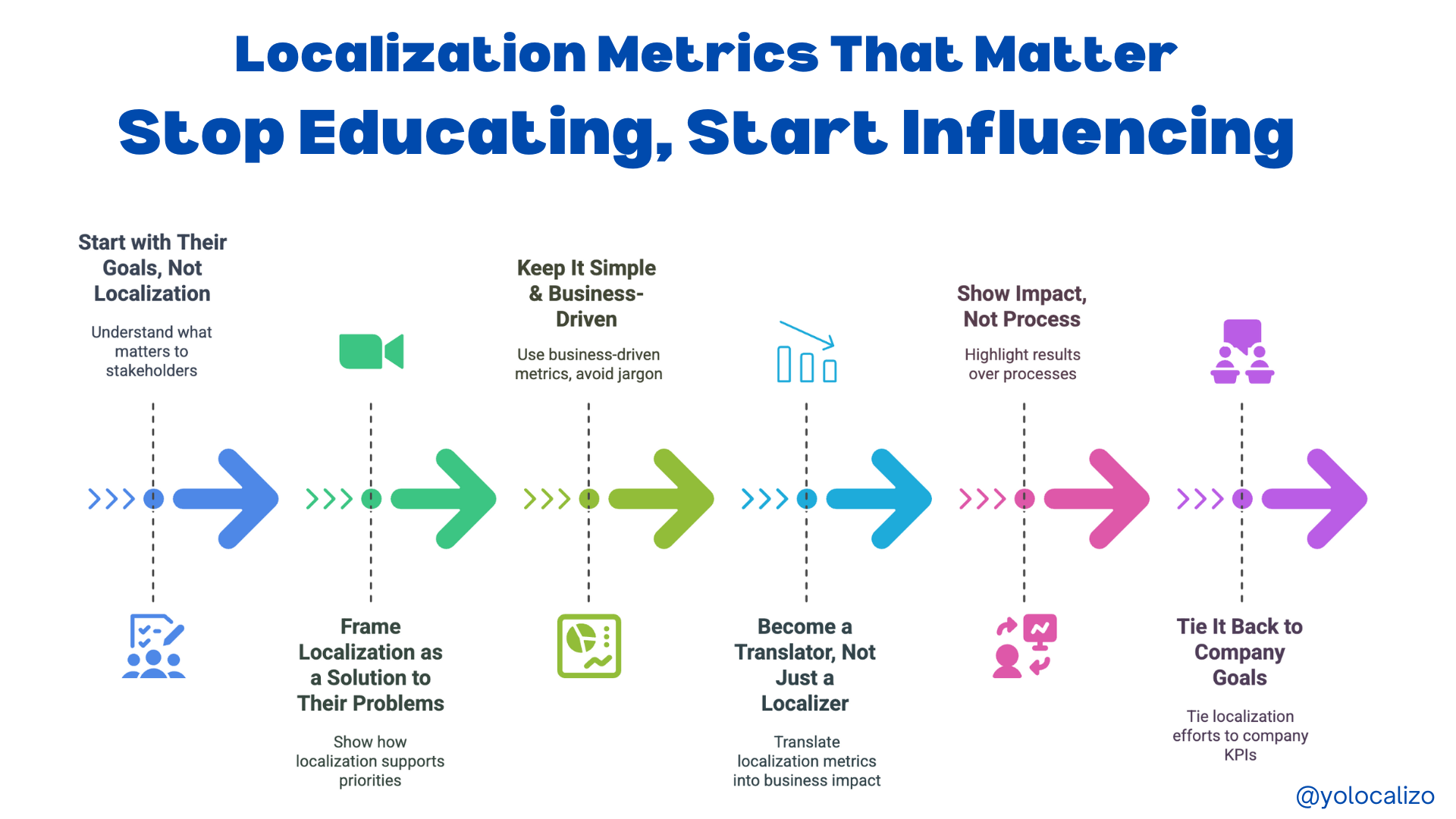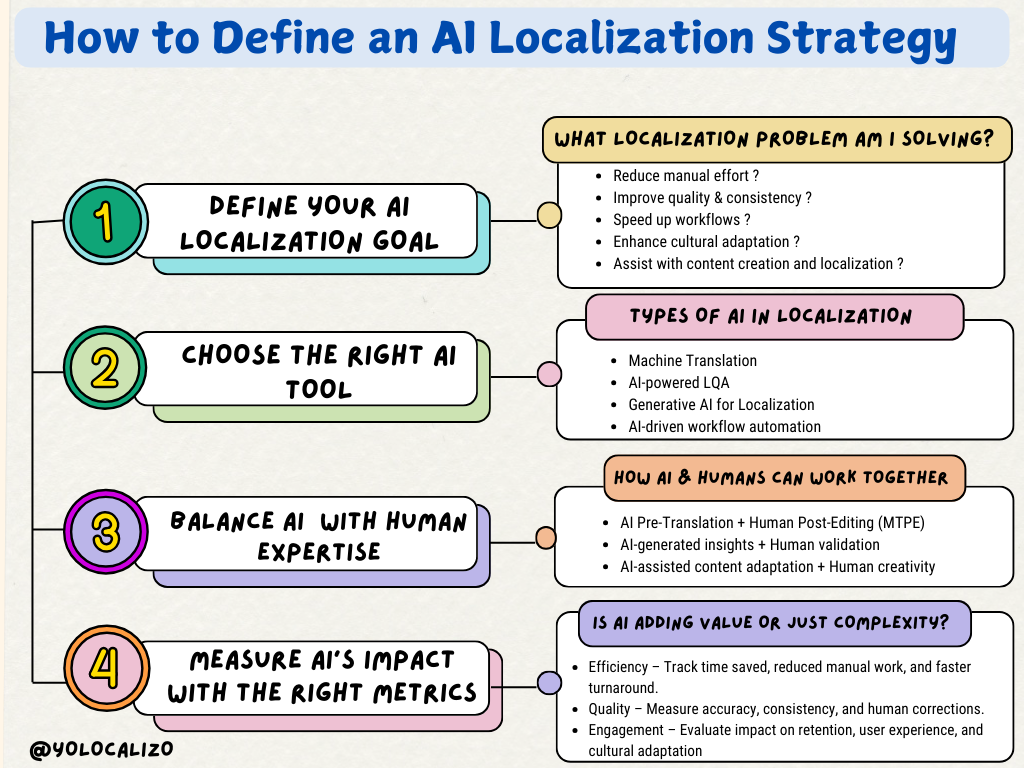How to Define an AI Localization Strategy (Without Falling for the Hype)
AI in Localization – FOMO or Strategy?
I was reading an article (HERE) about how CEOs are feeling the pressure to embrace AI, yet many struggle to define its tangible benefits.
The dilemma reading that article is troublesome: 97% of CEOs plan AI integration, but only 1.7% feel fully prepared.
While reading the article, I felt that the expectation was clear: Use AI for something! But what exactly?
The article is not focusing on Localization at all; this is coming from Cisco, so it’s targeting a different vertical; still, this resonated deeply with me as a localization industry professional, where leadership sees AI as a must-have,
The irony? The localization industry has been using AI-powered solutions for years—we just didn’t call them AI! But the reality is that Machine Translation (MT), Neural Machine Translation (NMT), and advanced Translation Management System (TMS) workflows have long leveraged automation, data-driven decision-making, and predictive models. Yet now, with the rise of generative AI, there’s renewed pressure to “do something with AI,” leaving localization teams uncertain about how to differentiate genuine innovation from simply following the trend.
AI is everywhere, and if you’re a localization manager, chances are you’ve felt the pressure from leadership to “do something with AI.” It’s the new shiny toy, and leadership teams don’t want to be left behind.
The problem? AI without a strategy is just expensive chaos. It’s tempting to dive in headfirst, but AI implementation can lead to unnecessary costs, inefficiencies, and frustration without a clear plan.
So, how do you define an AI localization strategy that actually makes sense?
In the following paragraphs, I will share four steps that help us better navigate this AI chaos.
Let’s break it down.
Click HERE to downlaod the image
Step 1: Define Your AI Localization Goals
Before integrating AI into localization, clearly defining your objectives is essential. Too often, companies adopt AI just because they feel they should, without understanding what they actually need it to do.
AI is just a tool; it’s not a magic wand that will solve all our problems. This brings me to the first piece of advice we should consider: Why do we want to use AI? What problem are we actually trying to solve?
Ask yourself: What problem am I solving? Is it about reducing manual work, improving consistency, or scaling faster?
AI should align with both localization needs and business objectives.
Here are some areas to help you think about; there are definitely different areas where AI can help, but I believe the following are meaningful considerations.
• Reduce manual effort – AI can automate repetitive tasks like linguistic quality assurance (LQA), pre-translation, and automated tagging. Those activities traditionally were time-consuming, so with this new approach and the support of AI, we can speed up the process while allowing human experts to focus on more complex tasks (the creative ones!).
• Improve quality & consistency – AI-powered tools can help us to enhance glossaries and enforce terminology, reducing errors and maintaining brand consistency across multiple languages.
• Speed up workflows – AI can automate the maintenance of TMs and optimize localization workflows by handling repetitive tasks, such as content segmentation, auto-tagging, and file preparation. This reduces manual effort and helps translations move through the pipeline faster, significantly reducing turnaround times.
• Enhance cultural adaptation – AI can help detect biases and suggest inclusive language recommendations, ensuring content resonates appropriately in different markets (but please ensure a human cultural specialist reviews the content as I’ve seen LLMs often provide wrong info when dealing with culture)
• Assist with content creation and localization—AI can help localization professionals generate and adapt content (e.g., product descriptions and marketing copy).
Step 2: Choose the Right AI Tools for Localization
Once you’ve defined the problem you’re trying to solve—congratulations, by the way! Because clearly articulating the problem we are trying to solve is often a step that is not considered carefully, we tend to jump to fix the problem without really reflecting on what the real problem is. Once the problem is identified, the next step is choosing the right AI tools.
Not all AI is built the same; some focus on translation, others on quality assurance, and some are just quite good at content generation.
Instead of blindly implementing AI, localization professionals must identify tools matching their needs.
Types of AI in Localization:
AI-powered tools have assisted localization for years, even before we called them AI. For example, MT is a form of AI that has been around for a long time.
• Machine Translation – Tools like DeepL, ModernMT, and Google AutoML help speed up translation while maintaining accuracy. Custom MT engines can be trained for company-specific content.
• AI-powered LQA – AI can automate QA checks for terminology, inclusivity, and consistency, reducing the burden on human reviewers.
• Generative AI for Localization – ChatGPT, Gemini, and Claude can assist with linguistic feedback, brainstorming, and content adaptation, helping refine messaging while keeping translations engaging.
• AI-driven workflow automation – AI can optimize processes by integrating into TMS, auto-tagging content, and scoring translation quality.
Step 3: Balance AI Automation with Human Expertise
Start small.
Run a pilot project before going all-in. AI tools require adaptation, testing, and feedback before fully integrating into your workflow.
AI is powerful, but it isn’t a replacement for human expertise. It works best in collaboration with human linguists rather than replacing them entirely.
How AI & Humans Can Work Together:
• AI Pre-Translation + Human Post-Editing (MTPE) – AI translates at lightning speed, but human reviewers ensure the final output is natural, accurate, and contextually appropriate. This approach works well for content with low visibility or underserved markets where budget constraints make fully human translation impractical.
• AI-generated insights + Human validation – AI can identify patterns and flag inconsistencies, but linguists make the final call on quality adjustments.
• AI-assisted content adaptation + Human creativity – AI can suggest cultural adaptations and localization professionals ensure tone, humor, and nuance remain intact.
Step 4: Measure AI’s Impact with the Right Metrics
Great! You’ve implemented AI, but how do you know it’s actually working? Without measurable KPIs, it’s easy to fall into the trap of using AI just for the sake of it, without proving its value.
The best AI localization strategies track performance over time and ensure that AI is genuinely improving in the following areas:
Efficiency – Measure time saved, reduction in manual workload, and faster turnaround times.
Quality – Track AI accuracy rates, consistency scores, and the number of human corrections required.
Engagement – Assess AI’s impact on user retention, user experience, and cultural adaptation success.
Some metrics we might consider are as follows
And this table below provides more granularity regarding how we can track them, so from here, we could create a dashboard.
A data-driven approach helps localization managers compare AI vs. human efforts over time. Tracking error reduction, processing time, and cost savings ensures AI is adding value not just extra complexity.
Another suggestion is that you likely have data from your past localization efforts. Use historical localization data as a benchmark to measure AI’s impact and make informed decisions about scaling AI solutions.
Conclusion
AI can REALLY help localization professionals, but only when used strategically. Jumping into AI just because leadership demands it isn’t enough. Instead, localization teams need to:
Define clear goals – Know what problem AI is solving.
Choose the right tools – Not all AI solutions fit every localization need.
Balance AI with human expertise – AI supports, but humans refine.
Measure success – Track efficiency, quality, and business impact.
The best AI localization strategies aren’t just experiments; they’re thoughtful, scalable, and data-driven.
So, the next time leadership says, “We need to do AI,” you’ll have the strategy to make it more than just hype.
Good luck! 🤖
@yolocalizo










Localizability has always been a challenge small issues in source content often lead to big problems later in translation. In this post, I explore how AI is giving localization teams a powerful new way to improve source quality, reduce friction, and create better content for every market right from the start.